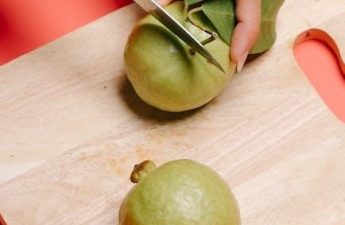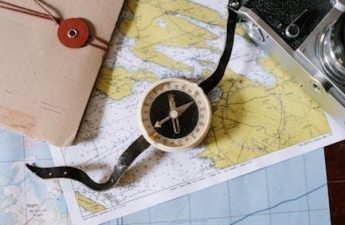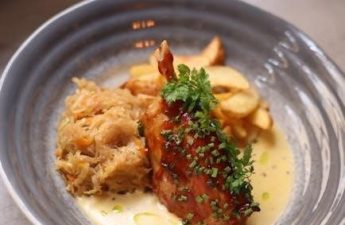Understanding Pony Diffusion Prompts
This guide explores effective prompt creation for Pony Diffusion, a Stable Diffusion model fine-tuned for generating pony-related imagery. Mastering prompts unlocks its potential, transforming simple text into stunning visuals. Learn how to leverage keywords and techniques for optimal results.
The Significance of Score Tags (score_9, score_8_up, etc.)
Within the realm of Pony Diffusion prompts, the enigmatic “score” tags (score_9, score_8_up, etc.) hold a pivotal role. These aren’t arbitrary additions; they’re remnants of the model’s training process, directly impacting the generated image’s quality. Originally stemming from a misunderstanding during the training phase, their inclusion is now crucial for achieving optimal results. The tags essentially act as quality control mechanisms, guiding the model towards producing higher-quality outputs. While the exact mechanisms remain somewhat opaque, empirical evidence strongly supports their inclusion. Experimentation reveals that omitting these tags often leads to significantly inferior results, highlighting their importance in generating refined and detailed images. Therefore, understanding and correctly implementing these tags is fundamental to mastering Pony Diffusion’s capabilities.
Understanding the Model’s Training Data and Origin
Pony Diffusion’s foundation lies in a meticulously curated dataset and a sophisticated training methodology. Initially, it leveraged an early fine-tuned checkpoint of waifu-diffusion, built upon the Stable Diffusion V1-4 architecture. This foundational model was trained on the extensive LAION-2B-en dataset, a massive collection of images and text pairings; Subsequently, further fine-tuning was performed using a learning rate of 5.0e-6 over four epochs, a process that involved iterative adjustments to the model’s parameters based on the training data. This specific training data, while not publicly disclosed in full detail, is known to include a substantial number of images related to ponies, particularly from sources such as Derpibooru and e621. The resulting model is highly specialized in generating images of ponies, exhibiting a deep understanding of their visual characteristics and stylistic variations.
Utilizing Derpibooru and e621 as Tag Sources
Derpibooru and e621 serve as valuable resources for sourcing tags when crafting prompts for Pony Diffusion. While both platforms offer relevant tag information, Derpibooru is generally preferred due to its specific focus on My Little Pony-related content, resulting in more accurate and contextually appropriate tags. Effectively utilizing these platforms involves understanding their tagging systems and selecting tags that accurately reflect the desired image characteristics. Remember that the model’s training data heavily influenced its interpretation of these tags, so familiarizing yourself with common tags and their associated visual styles on these platforms is crucial. Experimentation is key; try different combinations of tags to discover what yields the most desirable results. Careful selection of tags from these platforms can significantly enhance the quality and relevance of your generated images.
Advanced Prompt Techniques
Elevate your Pony Diffusion creations with advanced prompting strategies. Explore techniques for combining models, such as merging Pony Soup and Ponymaster, to unlock unique styles and expand creative possibilities.
Utilizing Pre-built Prompt Templates and Extensions
Crafting Effective Prompts for Pony Diffusion V6 XL
Pony Diffusion V6 XL, a powerful model, demands precise prompts for optimal results. Begin by understanding its strengths⁚ high-resolution image generation and detailed rendering. Leverage this by using descriptive and specific prompts. Avoid vague terms; instead, opt for precise adjectives and nouns. For example, instead of “a pony,” try “a majestic, white alicorn pony with a flowing mane and iridescent wings.” Experiment with art styles – specify “in the style of Studio Ghibli” or “in the style of Disney animation.” Pay close attention to lighting and composition; incorporate keywords like “dramatic lighting,” “golden hour,” or “cinematic composition.” Remember to utilize the model’s inherent strengths by focusing on details. The more precise your language, the better the model can translate your vision into a visual masterpiece. Don’t hesitate to experiment; iterate through several prompts, refining each attempt based on the generated images. This iterative approach is crucial for mastering prompt engineering within Pony Diffusion V6 XL, ultimately unlocking its full creative potential.
Combining Models⁚ Example with Pony Soup and Ponymaster
Expanding creative possibilities involves combining different models. This section illustrates merging Pony Soup and Ponymaster for enhanced image generation. Ponymaster, a versatile tool, allows for integrating other models seamlessly. To combine with Pony Soup v1, input “file poma/main” (case-sensitive) into the prompt field. This activates the main branch of Ponymaster, enabling the fusion of both models’ capabilities. The result? Images benefit from the distinct strengths of each model, creating unique outputs that neither could achieve alone. This approach allows for stylistic blends, improved detail, and enhanced overall image quality. Experiment with different versions of Pony Soup to observe variations in output. Remember to consult the respective model documentation for specific instructions and optimal parameter settings. The power of combining models lies in its ability to unlock new levels of creativity and aesthetic control, pushing the boundaries of what’s achievable in AI-generated art. This technique opens doors to innovative styles and unique imagery.
Resources and Tools
Discover essential resources for enhancing your Pony Diffusion journey. Explore curated toolkits, model access points, and thriving community forums for support and inspiration.
Curated Resources from Diffusion Stash by PromptHero
PromptHero’s Diffusion Stash offers a treasure trove of resources meticulously curated to elevate your AI art creation. This comprehensive directory boasts over 100 handpicked tools and resources, expertly categorized for easy navigation. Discover upscalers to enhance image resolution, explore fine-tuned models specializing in diverse styles, and delve into user-friendly interfaces and UI apps designed to streamline your workflow. Uncover face enhancement tools and other invaluable resources to refine your image generation process. Diffusion Stash is your one-stop shop for everything you need to master AI art generation, offering a wealth of knowledge and tools to unlock your creative potential and significantly improve your results. From beginners to seasoned artists, this resource serves as an invaluable companion on your journey to mastering AI-powered image creation. Explore the possibilities and unlock a new level of artistry with the help of PromptHero’s expertly curated collection.
Accessing and Utilizing the Pony Diffusion Model
Accessing the Pony Diffusion model might involve several methods depending on the specific version and your chosen platform. Many users utilize Stable Diffusion web UIs, often incorporating extensions or custom integrations for enhanced functionality. These user-friendly interfaces simplify the process of inputting prompts and generating images. Alternatively, you might directly interact with the model through command-line interfaces or specialized Python scripts, offering greater control over parameters. Remember to consult the official documentation or community resources for detailed instructions tailored to your chosen method. Understanding the model’s capabilities, including its strengths and limitations, is crucial for achieving optimal results. Experimentation is key; explore different prompt styles, keywords, and parameters to refine your approach and produce the desired imagery. Community forums offer valuable support and insights from experienced users, guiding you through potential challenges and providing solutions to common issues.
Community Resources and Forums for Support
Engaging with the vibrant community surrounding Pony Diffusion is invaluable for troubleshooting and learning advanced techniques. Numerous online forums, Discord servers, and Reddit communities are dedicated to Stable Diffusion and its various models, including Pony Diffusion. These platforms offer a wealth of shared knowledge, from beginner tips to expert-level discussions. Experienced users often share their prompt engineering strategies, helping newcomers navigate the intricacies of generating high-quality images. You can find answers to common questions, access tutorials, and even get personalized feedback on your prompts. Participating actively in these communities fosters collaboration, enabling you to learn from others’ experiences and contribute your own insights. Remember to follow community guidelines and etiquette for a positive and productive learning environment. Don’t hesitate to ask questions; the community is generally welcoming and supportive, ready to assist you on your journey to mastering Pony Diffusion prompts.
Expanding Your Skills
This section guides you toward advanced prompt engineering, exploring diverse art styles and mastering high-quality image creation techniques using Pony Diffusion.
A Comprehensive Guide to Stable Diffusion Prompt Engineering
Stable Diffusion, the foundation of Pony Diffusion, relies heavily on effective prompt engineering. This involves understanding how keywords, modifiers, and artistic styles interact to influence the generated image. A well-crafted prompt is crucial for achieving specific results. Experimentation is key; try different combinations of words and phrases to observe their impact. Learn to utilize negative prompts to exclude unwanted elements from your creations. Explore resources dedicated to Stable Diffusion prompt engineering; many online communities and tutorials offer valuable insights. Mastering this skill significantly enhances your control over the creative process, allowing for precise and nuanced image generation. Consider the impact of word order; subtle changes can drastically alter the outcome. Remember that iterative refinement is essential. Start with a basic prompt and progressively add details, adjusting based on the generated results. The more you practice, the better you’ll become at predicting and controlling the outcome.
Exploring NSFW Content and Art Style Variations
Pony Diffusion, while capable of generating a wide range of imagery, also allows exploration of NSFW content and diverse art styles. Understanding the model’s capabilities in this area requires responsible usage and awareness of community guidelines. Experiment with specific keywords to explore different levels of explicitness. Remember to always respect ethical considerations and legal boundaries. The model’s versatility extends to a broad spectrum of artistic styles; from realistic to cartoonish, anime to painterly, the possibilities are vast. Experiment with art style descriptors like “photorealistic,” “anime,” “cel-shaded,” or “impressionistic” to see how they influence the output. Combining style descriptors with subject matter allows for highly creative and personalized results. However, always prioritize responsible use and ensure your creations align with ethical standards and platform policies. This exploration should be approached with sensitivity and respect for community norms.
Creating High-Quality Images with Specific Prompts
Achieving high-quality images with Pony Diffusion hinges on crafting precise and descriptive prompts. Vague prompts yield unpredictable results; detailed prompts offer greater control. Specify aspects like lighting (“soft lighting,” “dramatic lighting”), composition (“close-up,” “wide shot”), and camera settings (“shallow depth of field,” “wide-angle lens”). Incorporate artistic styles (“Art Deco,” “Impressionism,” “photorealistic”) for stylistic influence. Experiment with adding details about the subject’s pose, expression, and attire. For instance, instead of “pony,” try “a majestic unicorn with flowing mane, elegant pose, wearing a jeweled saddle.” Refine your prompts iteratively, adjusting keywords based on the generated images. Don’t hesitate to use multiple iterations to fine-tune your description and achieve your desired level of detail and artistic fidelity. Remember that specificity is key to unlocking the model’s full potential and producing truly exceptional results.


